4 car terms misused by almost everyone
Automotive enthusiasm has its own glossary. Many of the terms mean something different from one niche of the culture to another, but some have well-established definitions. Below are four of my biggest pet peeves in car nomenclature.
Some argue that because language is always changing, every word acquires a new meaning over time. That’s true, but only if we let them—and why fix what isn’t broken?

1. “Roadster”
The slow evolution of the term roadster is one that I’ll have to accept, but there’s a bar for entry—a point at which a car is simply not a roadster.
A century ago, “roadster” meant a two-seat, topless car with minimal weather protection. A Ford Model A roadster doesn’t have glass side windows, while a Model A cabriolet does. By the 1950s, the word’s meaning had been nudged a little—European sports cars with fabric side curtains and tops were still called roadsters, because their weather gear didn’t do much.
Later, the term evolved into a way to differentiate between sporty, two-seat convertibles and larger, more luxurious four-seat convertibles. That makes for a blurry line, of course. The Porsche 718 Boxster is a roadster, a 5000-pound, four-seat Bentley Continental GTC is not, and there’s plenty of room between the two for debate.
Marketplace
Buy and sell classics with confidence
The upcoming Tesla Roadster, with its four seats and its fixed rear roof, is not a roadster by any definition, past or present. What’s so bad about admitting that a car is a targa-top?
2. “Big-block” Pontiac
Spend enough time searching classified ads, you’ll inevitably come across a car powered by a “Pontiac big-block.” There is no Pontiac big-block.
Pontiac unveiled its first V-8 in 1955. For nearly 30 years, until the division replaced its house V-8 with a version of GM’s “corporate” Chevy small-block, there was only one Pontiac V-8 architecture. From 265 cubic inches all the way to 455, Pontiac used just one bore spacing (the distance from the center of one cylinder bore to the center of the adjacent bore in the same bank). The 5.0-liter used in early Trans-Am racing (above) has the same external dimensions as a 455.
(Before anyone mentions it, Big Chief cylinder heads bolted onto a Chevy big-block bottom end don’t make the engine a Pontiac big-block.)
Oldsmobile is the same way, with identical bore spacing in everything from the 303 Rocket to the monster 455. Olds fans like to differentiate between small- and big-block engines based on deck height—the distance from crankshaft center to cylinder top—but that’s not what makes a big-block in my book. Tall-deck Chevy LSX engines are still small-blocks, after all.
With Olds and Pontiac, it seems the confusion comes from the fans themselves—each brand is now dead, and neither used the “small-block” or “big-block” nomenclature in any official capacity.

3. “Heat Soak”
When the C7 Corvette Z06 debuted for 2015, road-racing netizens were quick to assault its supercharged, 650-hp LT4 V-8. They were certain that a naturally aspirated V-8 was the proper choice for a track-focused Corvette.
They had a point, at least for a bit. The initial version of the cooling system in that Z06 wasn’t up to the task of keeping intake air cool for prolonged track sessions at high ambient temperatures. The result was reduced performance. For 2017, Chevrolet remedied the problem with a new cooling system and a supercharger lid with an improved charge cooler. (The latter part also found its way onto later applications of that engine, including the sixth-gen Camaro ZL1.)
Plenty of outlets said those early Z06s were experiencing “heat soak.” They weren’t. The engines in those cars simply produced more heat than the cooling system could deal with. “Heat soak” is what happens when an engine’s cooling system rises in temperature after you shut it off. When the water pump is no longer pumping coolant through the radiator, because that pump only runs when the engine is running.
Park a hot car, fresh off the track, and turn off the engine—coolant temps will continue to climb. If an engine is still running and still pushing coolant through its radiator, but it can’t keep everything happy enough to produce the quoted factory power? We already have a term for that: overheating.

4. “Widebody”
I’ve saved my most pedantic pet peeve for last. Fender flares don’t make a car a widebody.
Blame Dodge for legitimizing this. The picture above is a “widebody” Challenger. The car is also offered in a standard “narrow” configuration, without the fender flares.
If the fenders and quarter panels on the “narrow” and “widebody” versions of a car are the same, something doesn’t add up. Let’s use a Mopar cousin as an example: You could call the Ram TRX (below, left) a widebody, sure. The body is substantially different from that of the base Ram. But the Power Wagon? I don’t think so.
Many of you probably disagree with these silly opinions. I’d love to hear your own car-language pet peeves—share them in the comments! (Just don’t expect to change my mind.)
***
Check out the Hagerty Media homepage so you don’t miss a single story, or better yet, bookmark it. To get our best stories delivered right to your inbox, subscribe to our newsletters.

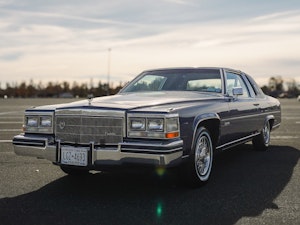
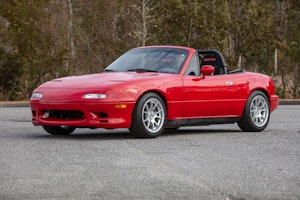
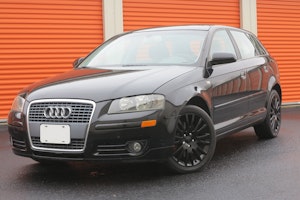
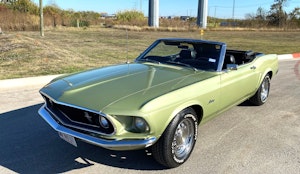
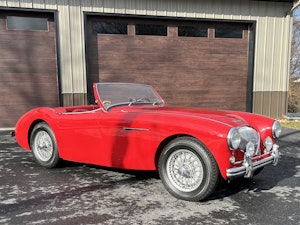

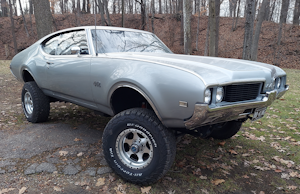
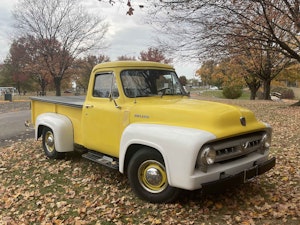











If the Porsche Cayman is a roadster, what is the Porsche Boxster?
The article states Pontiac’s first V-8 in 1955 was 265 cu. in. and the biggest was 455 cu. in.
The author got confused with Chevy’s V-8 in 1955 which in fact was 265 cu. in.
Pontiac’s first V-8 was 287 cu. in with 180 HP with a 2 bbl., and 200 HP with a 4bbl.
Thanks. I was aware of the 287, but not the 265.
Just for clarity purposes, I’m pretty sure @Brandan Gillogly meant to say Porsche Boxster is a Roadster, and not Porsche Cayman. The Cayman is definitely not a Roadster.
The British used the term roaster to describe a sports car that’s windshield could be removed for racing and then reinstalled for domestic travel.
Such as the AC Cobra?
As long as people are being picky, I’ll note that the author calls a Porsche Cayman a roadster when it is actually a coupe since it is not a convertible at all.
Roadster, Porsche….I believe you ment to say Boxster not Cayman?
You missed the most commonly misused car term ever. When people say VIN Number (like they always do), I just roll my eyes. As we all know, VIN stands for “vehicle identification number”. Just say VIN, and don’t look dumb.
You mean like “ATM Machine.”
My 1960 Austin-Healey 3000 most definately IS a “roadster”… it does NOT have a “convertible” hood (top), has no windows (side curtains), and was sold AS SUCH. Of course, trying to register it, here in Colorado, as “such”, became a horrid hassle, as “the computer” has no such entry capability, so it’s listed as a “convertible”. HA! The difference is that in a rainstorm, a “convertible” top can be fairly easily raised, whilst in the Healey, the owner’s manual brightly put it thus…””Erecting the Hood”… yep, pretty accurate.
“jdm”, “usdm”, “edm” and basically anything else that end in “dm”. People will foolishly spout off misinformation and then defend it to the ends of the earth. Uggghhh…
In my youth (60’s) most of us ran hopped up GM; 265, 283, 327 cu,which we referred to as small blocks. Some we rebored to 301, 350 but still called them small blocks. When the 396, 409, 427s came into production we called them big blocks. Correctly or not that was our terminology.
The 301 version of the Chevy small-block actually made an appearance in the ’61 Chevys, but I believe only for one year.
I can’t accept automotive writers referring to oil passageways in an engine block as “galleys.” A galley is an ancient sailing ship or the kitchen of an aircraft or sailing vessel. A definition of “gallery” is a passageway. Unfortunately these writers influence their readers and thereby propagate the misuse of the term. Of my many emails to inform publishers that the proper word is GALLERY, the most humble and appreciative response came from Hagerty Drivers Club magazine.
The most misused automotive term of all time surprisingly is not even on your list? Anyone that knows anything about cars will tell you, there is no such thing as a “FRAME OFF “Restoration When cars were built new in the factory the body was lowered onto the frame, just like a house is built on a foundation. Cars receive a “BODY OFF” restoration, the body is taken off the frame. I am very surprised when knowledgable car people misuse this term?
Semantics. You are taking the body off the frame, or frame away from the body, so the frame is off the body. Any way you look at it, it depicts a major restoration.
Especially funny when referring to unibody cars.
Flywheel used to describe a flex plate.
No, not at all. The flywheel is part of the clutch assembly on a manual transmission. They get the name from the cast iron construction that maintains engine rotation between power pulses. The clutch friction disk presses against the machined surface of the flywheel when the clutch pedal is released, transferring torque from the engine through to the input shaft.
A flex plate is just a sheet metal disk that’s bolted to the crankshaft on cars that have automatic transmissions. It simply connects the torque converter to the crankshaft.
…and provides a ring gear for the pinion gear on the starter.
When you discuss small block and big block here, we are totally missing the point. The comparison only ever referred to the mid-sixties when the new ‘big-block’ Chevy motor arrived to compete beside its legendary ‘small-block’ brother. It arrived, production-wise, in 396 form. Up until that time I don’t believe the 265/283/327 engine wore the ‘small-block’ monicker. Any other references to other manufacturers’ engine differences regarding small block/big block came out of the original Chevy comparo. The term referred to Chevy only. As to the the Pontiac reference, here in Canada we called the larger American motors that arrived here the ‘blue-block’, referring to the French-blue paint colour of the engine. The Chevy motors were orange. For a couple of decades in Canada, Pontiacs were basically a slightly up-scale Chevy and had Chevy drive-lines, including ‘small-block’ and ‘big-block’ models. The ‘blue-block’ motors arrived in the Firebirds in 1968, in 350 and 400 cid form, but the regular Canadian Pontiacs continued with the Chev small-block and big-block motors. A friend of mine ordered a ’69 Pontiac Strato-Chief (once again, Canadian only) from the factory with a 427 Chevy big-block and Muncie M22 transmission. It was a two-door (and I know I am opening a can-o-worms here) ‘post’, as we called it, but that style was called a ‘coach’ in the fifties. Just saying.
How about Pontiac’s misuse of the term ‘Wide Track’ for so many years? The track actually grew only an inch, which could have been replicated with a slightly wider tire.
Canadian Pontiacs in 1959 were built on a Chevy Chassis, so the wheels were set in that little bit more in respects to the body. So visually the opposite of wide track, if one’s eyes notice such a difference.